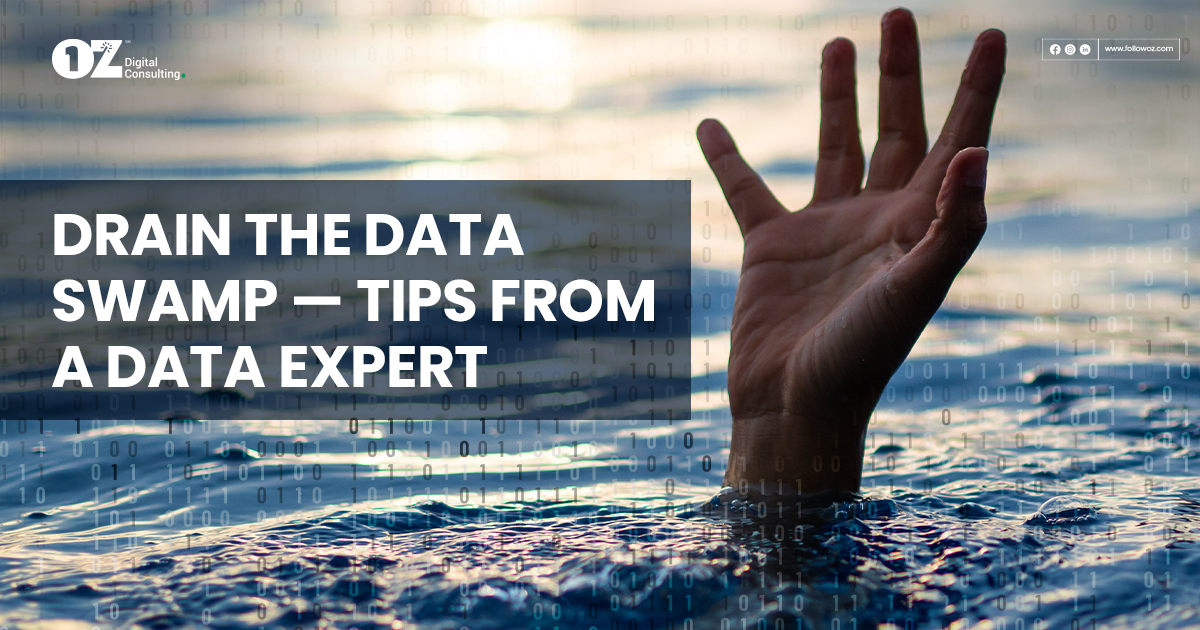By Sal Cardozo, Senior Vice President, Data Analytics & AI
More data is not always better data. For decades, businesses were urged to collect as much data as they could on their customers, competitors, and products. We’ve gone from collecting 700 terabytes of data in 2000 to collecting around 79 zettabytes. Most of this data, according to McKinsey, is worth $11.3T in unexploited value.
And with the emergence of large language models (LLMs), the data we store will only increase.
So where does all this data go?
Data of all types typically stream into a data lake. Data lakes contain a massive amount of data stored in its raw, native format.
They arose in response to data silos providing an efficient way to store unstructured, semi-structured, and structured data. But a data lake can quickly become a swamp without governance, quality, and security. Which is why it’s no longer enough just to store the data.
We need to ask:
Why are we collecting the data?
How should we handle the data?
How can we put the data to good use?
If not, you could risk turning your data lake into a data swamp.
To know whether your data lake is in danger of becoming one, probe further:
- Do you need help getting data out?
- Is it hard to correlate different data points or types of data?
- Is the data quality and continuity bad? Are there lots of missing fields?
If you checked “yes” to the above, you’re likely stuck in a swamp — or a swamp in the making.
Here are the steps our data expert, Sal Cardozo, SVP Data Analytics and AI, recommends to prevent data pollution from ruining your data lake.
1. Stop the Data Dump
Most companies want to store all their data, but remember, not all data is equal. Choose to keep only what’s delivering broader business value — driving efficiencies, improving the customer experience, and informing product development. Once you have the most important data, get buy-in from your stakeholders. If not, you create more of a problem than a valuable data store.
2. Plan Your Data Lake
Want to get the best out of big data? Focus less on the technology surrounding it but more on the architecture that can bring out the best in the data. When you plan a data lake, always consider its architecture, governance, and security. Group consumers and producers according to their data access needs. Many factors influence each data lake’s structure and organization:
- The type of data stored
- How its data is transformed
- Who accesses its data
- What are its typical access patterns
If your data lake contains hundreds of data assets, you may want to consider cloud-based data storage like Microsoft Azure Data Lake. Because the sheer volume of big data — particularly the unfiltered data of a data lake — makes on-premises data storage challenging to scale. And a strong data foundation makes it easy to run large-scale analytics workloads.
With Azure Data Lake, you can run multiple levels of analysis. Instead of moving the data to where the intelligence lives, it brings the algorithms to the data and operates where the data resides, saving you the cost of data movement.
3. Migrate to a Cloud Data Lake
The bigger your data needs, the more you’ll benefit from cloud-based data storage like Microsoft Azure Data Lake. Here’s why:
- Secure storage with greater protection across data access, encryption, and network-level control
- Single storage platform for ingestion, processing, and visualization that supports most analytics frameworks
- Cost optimization via independent scaling of storage and compute, lifecycle policy management, and object-level tiering
4. Collect Metadata
So, you’ve picked the most business-critical data and the right data management solution; what’s next? Knowing your data — how is it created? Where is it entered? How is it being maintained?
Take stock of where your company’s important data comes from and how it’s entered into your systems. Ensure the data you’re storing is accurate: regular cleansing will modify data that is incorrect, incomplete, irrelevant, or improperly formatted.
One of the reasons many organizations struggle to manage their data estates is that they don’t collect enough metadata. Metadata is the key to unlocking the value within big data. IDC calls the lack of metadata in our big data lake the “Big Data Gap”. Most data ingested into the data lake are raw data files we know little about.
Azure data lakes, on the other hand, come with built-in metadata management tools and include metadata such as:
- Data source
- Date of creation
- Data format
- Data schema (if applicable)
- Data class
- Version
- Ingestion time
- Other common internal identifiers like device ID, user ID, and company ID
It oversees data across the entire lifecycle, covering four primary areas: data analysis, data value, data governance, risk, and compliance.
5. Establish strong data governance
Governance is often seen as slow and limiting. But in reality, it helps assign control over data assets so that data is consistent and can be used across an organization.
Azure data lakes provide robust security features to protect data. Access controls, encryption, and auditing capabilities keep your data secure and compliant. Automated data quality checks at the point of ingestion into the data lake test for data consistency, completeness, and accuracy.
Partner with the Cloud Experts
We have over 25 years of experience running global cloud, data processing, and analytics projects. Azure Data Lake solves many of the productivity and scalability challenges that prevent companies from maximizing the value of their data assets. As a certified Microsoft partner, we can help you migrate to the Azure Data Lake to meet your current and future business needs.
Contact us today.



